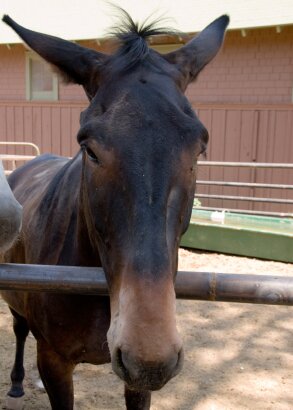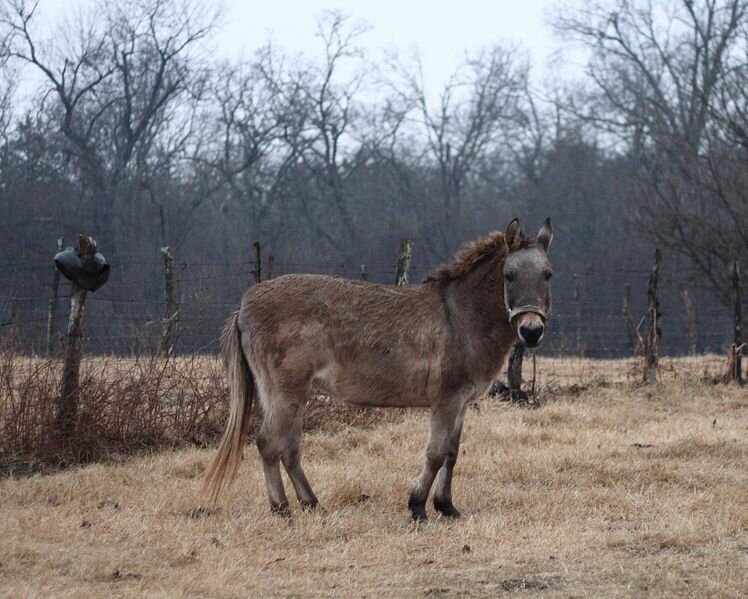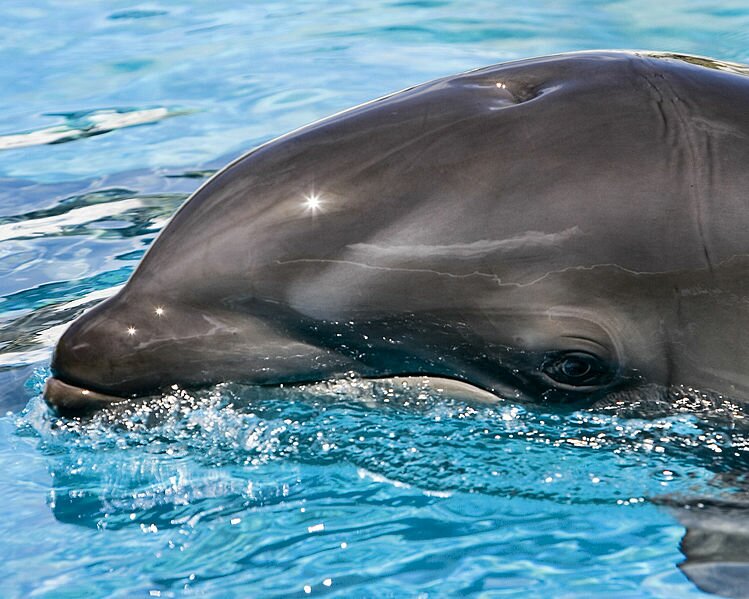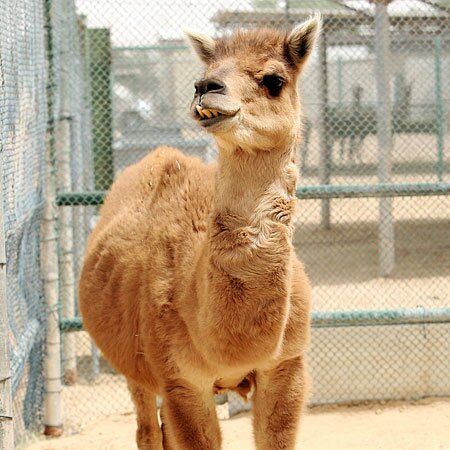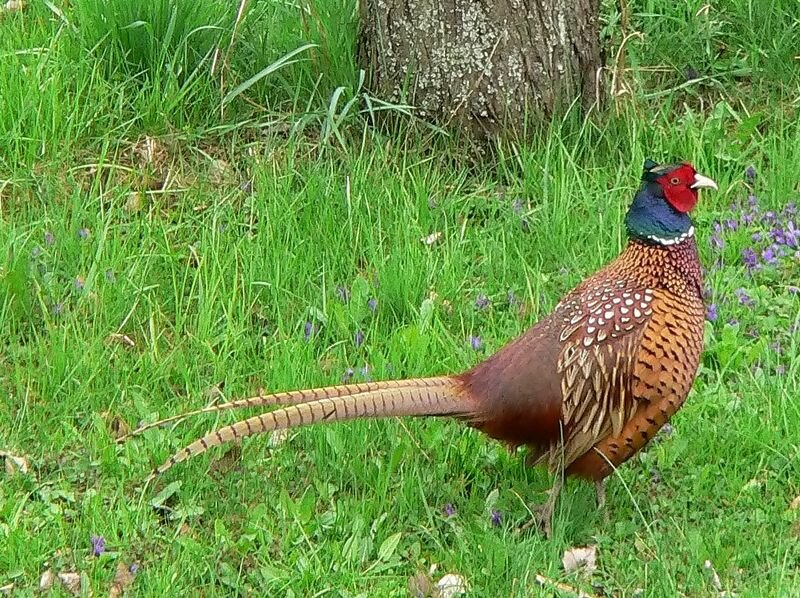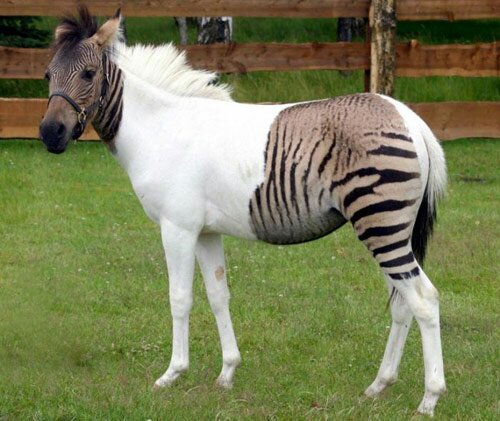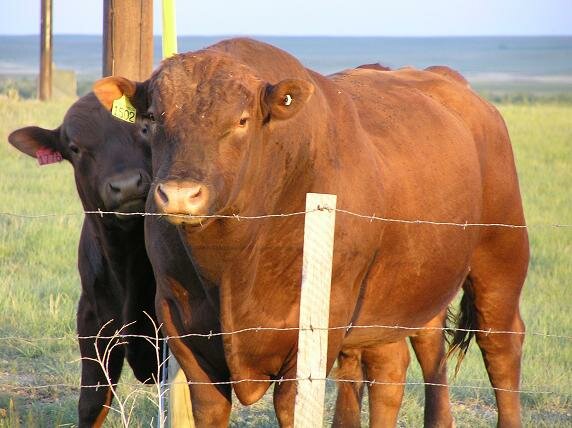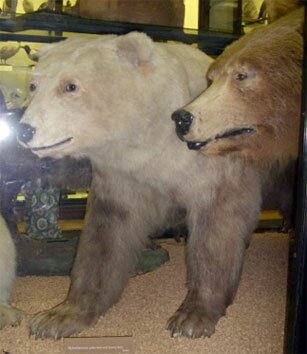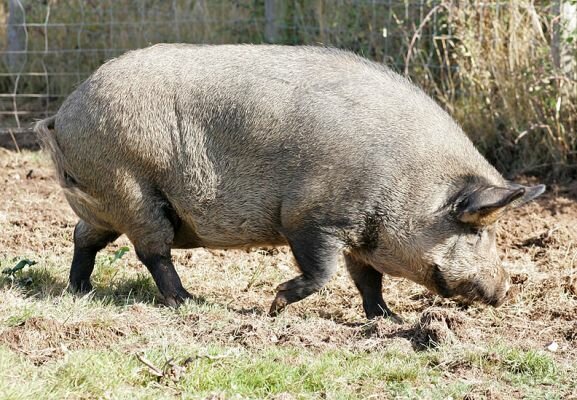There are about 375,000 species of plants in the world today, with more being discovered on a daily basis. Plants come in all different sizes, shapes, colors, and even scents. We’ve all seen the common household plants: ferns, orchids, violets… but most of the plants on this list you’ve probably never seen in real life.
Even though classifying something as bizarre is pretty relative and will differ from person to person, these plants are most definitely strange in more than just one way. If you’re looking to surprise your girlfriend, these are not the types of plants to put into a pot; save them for the mother-in-law. Below are 10 odd plants that will probably make you think twice.
10. Dionaea Muscipula
Better known as the Venus flytrap, the Dionaea muscipula is one of about 670 carnivorous plants that researchers have discovered. The plant is able to attract insects and spiders, and once the bug is inside of the plant it will make contact with the tiny hairs inside, which then spark a reaction for the plant to close its lobes. If the prey does escape, the trap usually reopens in about 12 hours. If the bug is unable to get away, the further movement it makes in attempt to escape only forces the plant to tighten even more, which leads to digestion.
You’ve probably seen these plants in the stores or even at someone’s home, placing it low on the list despite its strange diet (and, let’s face it, a meat-eating plant is pretty bizarre). The stems often get no larger than 4 inches, and can be a bit smaller than 1 inch. In the spring, the plant produces delicate white flowers, but only if it is healthy. As a result of wildfires, they are considered to be a vulnerable species, which means that they are highly likely to become endangered. While the plant has been transplanted to many locations, the only place where it grows natively is in North Carolina bogs. Despite what you may think, the Venus flytrap is not a tropical plant; in fact, it thrives in the winter.
9. Wolffia Angusta

Sometimes referred to as watermeal, Wolffia angusta belongs to a genus that is made up of some of the smallest plants on earth. There are 38 Wolffia plants total, 9 of them being the smallest plants ever discovered. The Wolffia angusta is so small that a dozen single plants can easily fit onto the head of a pin. If you were to find 2 plants that were in full bloom, you could fit them inside a very small handwritten “o.” You’ll find this plant growing on the water’s surface, which explains its name because, at first glance, you could easily mistake it for cornmeal floating in the water. These plants have no roots and grow in depressions in the water’s surface. They often group together and even combine with other similar plants that also make the water home.
Watermeal is native to Asia, where it is part of many people’s diets. It is said to have just as much protein as soybean, which is about 40% of its nutritional value. However, eating plants the size of 1/25 of an inch can’t be filling!
8. Lithops Julii

Lithops julii is a weird plant that you’ll find growing in southern Africa. The plant thrives in very hot and dry environments, and if you know a little Greek, you may know why. The plants name, Lithops, comes from the word ‘lithos’ which means stone and ‘ops,’ meaning like or similar to. Other names for Lithops julii are pebble plants as well as living stones. Truly, every aspect of the plant is very much like a rock. For instance, most plants are green or have some hint of yellow to them. But, the Lithops are cream, grey, brown in color (some with red designs). These colors are useful because they allow the plant to blend in and almost camouflage itself. Overall, just like rocks, the Lithops plant is pretty dull.
Though the plant doesn’t sound pretty, it does actually produce flowers. The flowers look very similar to a daisy; white with long petals and a pale yellow center. These flowers usually bloom in the fall. Now, if you’re into weird plants that don’t add very much color to a room, you can choose to buy a Lithops and grow it in your home. With enough light and ventilation along with minimal water, these plants do great.
7. Welwitschia Mirabilis

When it comes to most living things, water and food are a necessity. However, for the Welwitschia mirabilis, 3 inches of water during an entire year work just fine. An inch of this usually comes from rain while the other 2 inches are provided by the ocean fog. However, the lack for water may explain this plant’s appearance- it’s dry, rugged, flimsy look most definitely fits the mold. The plant only grows 2 leaves during its entire lifespan, which is about 1,000-2,000 years, but they often split after growing to be up to 13 feet, which makes the plant seem like it has more. With such a lifespan, the plant has earned the name as the “living fossil.”
The plant was first discovered in 1859 by Friedrich Welwitsch, which explains the plant’s name. These plants usually grow well in Angola and Namibia; however, they are not widely found in Namibia due to locals who dig them up and collect them. The minefields in Angola keep them plenty safe. The biggest Welwitschia plant is 4.6 feet tall and 13 feet wide.
6. Victoria Amazonica

From experience, you probably know that lily pads and water lilies aren’t huge plants. They are maybe the size of a human hand, if not a smidge bigger. In contrast, the Victoria amazonica plant can hold a human hand, as well as the rest of a 300lb human body. That’s right; they’re like stepping stones in the water. The plant is the largest water lily ever discovered, and everything about it is big. The root itself is more than 26 feet long and the leaves and flowers can grow to be about 10 feet in diameter. This plant is not only large, but it changes colors. When its flowers bloom the first night, they are a pure white color. The next day they are pink. Despite its beauty, the plant is covered in piercing spines, except the flower, roots, and the pad itself.
Native to the Amazon River basin, the plant was first introduced to Europe in 1837 by John Lindley, and during this time people were nothing less than fascinated. It earned the name of the “giant water platter” but its scientific name was given in honor of Queen Victoria. The plant was so popular that there were competitions to see who could properly harvest the plant first. In 1849 the Duke of Devonshire proved to be the winner.
5. Hydnora Africana

Native to southern Africa, the Hydnora africana, a parasitic plant, is one that might permanently change your mind about sniffing flowers. It is probably most known for its disgusting scent, which is often compared to the smell of feces. The scent is disgusting but necessary for the plant’s survival, so that it can attract dung beetles, carrion beetles, and other pollinators. The plant traps these bugs and they are eventually released once it reopens. Not only does the plant smell bad, it also has no aesthetic properties to it either. It’s a dull brown/grey plant that has no leaves and truly looks like it has no life to it. The plant grows underground but the only part one can see is the fleshy flower that grows above ground.
The plant was first discovered and transplanted to California in 1973 by Sherwin Carlquist. Crazy as the idea seems, this plant is actually edible. The fleshy pulp-like flower can be eaten, which is often where all of the plant’s seeds are located. But who really goes close enough to this plant to take a bite out of it, let alone get past its smell?
4. Nepenthes
The Nepenthes plant is found in Indochina, Australia, and throughout the Malay Archipelago. It thrives in high humidity locations with average rainfall and a lot of light. With a name like monkey cup, how couldn’t it be a bit bizarre? The name is quite fitting as numerous people have observed monkeys drinking out of the plant. The plant was first described in 1658 as being about 3 feet high with 7 inch long leaves that hold a hollow flower. The hollow flower that is described is often full of a liquid that the plant produces on its own. The liquid is sometimes drunk by mammals, but its real purpose is to drown its prey. There is also a “lid” so to speak that covers the top of the flower that covers the liquid. There are high flowers, which hang from the vines, and low flowers which are closer to the ground.
Now, if you thought the Venus flytrap was bad for eating insects, you’ve heard nothing about the Nepenthes plant. This plant eats spiders, insects, scorpions, and centipedes; it has also been known to capture lizards, frogs, and even snails. Though not very common, it has occurred. If you’re interested in owning a Nepenthes plant you can purchase seeds and grow it in a greenhouse, but keep in mind, you’ll be responsible for manually feeding it insects (mostly crickets). Who doesn’t want a pet plant?
3. Dracunculus Vulgaris

Sometimes called the Stink Lily or the Dragonwort, the Dracunculus vulgaris gets its name from its shape. The plant has a long spadex that is often a black or very deep purple color that is surrounded by the spathe. The spadex is often referred to as the dragon that is hiding in the spathe. The plant is most often found in the Balkans, including Crete, Greece, and the Aegean Islands. However, researchers have been able to take it from these locations and harvest it within the U.S. in states such as Tennessee, Oregon, and California. They have also been taken to Puerto Rico.
The plant gets one of its nicknames from the smell that it gives off, which has been compared to the smell of rotting flesh. The smell attracts pollinators so that the plant can continue to grow. The good thing is that the smell is only temporary and does eventually go away. The Stink Lily is a very hardy plant that grows more each year. Plants can have more than 40 blooms at one time.
2. Rafflesia Arnoldii
The Rafflesia arnoldii is another plant on the list that isn’t known for its beauty or elegance, but for its order and size. It is extremely rare and it isn’t a plant you can just grow anywhere, placing it higher on this list. Like the Dracunculus vulgaris, it’s smell is very similar to rotting meat and this scent is needed to attract certain insects that will eventually pollinate the plant for further growth. The plant was named after Sir Stamford Raffles, a man who founded the colony of Singapore. You’ll find this plant in the Borneo and Sumatra rainforests as well as in the Indonesian Archipelago. Adding to it’s uniqueness, the Rafflesia arnoldii is considered to be the plant with the largest flower, which can weigh up to 24lbs and be as wide as 3 feet.
You won’t be able to walk through the rainforest and find many of these. The growing process for the plants take months and the flower itself only stays in bloom for a few days. At the same time many consider this plant to be on its way to extinction. Though the flower itself is highly interesting, the smell is sure to keep anyone away. The plant always grows 5 very thick petals that are generally a burnt-orange/red color.
1. Amorphophallus Titanum
If you know some Latin or you’re just knowledgeable in the English language, you probably know exactly what the word phallus means; but let’s put it altogether. Amorphos means misshapen, phallus means penis, and titan means big. Yes; this plants name is big misshapen penis. How couldn’t this top the list? If the scientific name doesn’t persuade you, its nickname surely will: corpse flower. The name comes from the fact that the plant lets off an odor that is said to smell exactly like rotting and dead flesh. The Amorphophallus titanum is a plant that is only indigenous in the Sumatra rainforests, though it has been transplanted, harvested, and grown around the world. The plant reaches a towering 10 feet and closely resembles a calla lily but with a spadex growing through the middle of it. Though the smell isn’t pleasant to human noses, it serves its purpose: attracting carrion beetles, dung beetles, and flesh flies.
Source
READ MORE»
Even though classifying something as bizarre is pretty relative and will differ from person to person, these plants are most definitely strange in more than just one way. If you’re looking to surprise your girlfriend, these are not the types of plants to put into a pot; save them for the mother-in-law. Below are 10 odd plants that will probably make you think twice.
10. Dionaea Muscipula
Better known as the Venus flytrap, the Dionaea muscipula is one of about 670 carnivorous plants that researchers have discovered. The plant is able to attract insects and spiders, and once the bug is inside of the plant it will make contact with the tiny hairs inside, which then spark a reaction for the plant to close its lobes. If the prey does escape, the trap usually reopens in about 12 hours. If the bug is unable to get away, the further movement it makes in attempt to escape only forces the plant to tighten even more, which leads to digestion.
You’ve probably seen these plants in the stores or even at someone’s home, placing it low on the list despite its strange diet (and, let’s face it, a meat-eating plant is pretty bizarre). The stems often get no larger than 4 inches, and can be a bit smaller than 1 inch. In the spring, the plant produces delicate white flowers, but only if it is healthy. As a result of wildfires, they are considered to be a vulnerable species, which means that they are highly likely to become endangered. While the plant has been transplanted to many locations, the only place where it grows natively is in North Carolina bogs. Despite what you may think, the Venus flytrap is not a tropical plant; in fact, it thrives in the winter.
9. Wolffia Angusta

Sometimes referred to as watermeal, Wolffia angusta belongs to a genus that is made up of some of the smallest plants on earth. There are 38 Wolffia plants total, 9 of them being the smallest plants ever discovered. The Wolffia angusta is so small that a dozen single plants can easily fit onto the head of a pin. If you were to find 2 plants that were in full bloom, you could fit them inside a very small handwritten “o.” You’ll find this plant growing on the water’s surface, which explains its name because, at first glance, you could easily mistake it for cornmeal floating in the water. These plants have no roots and grow in depressions in the water’s surface. They often group together and even combine with other similar plants that also make the water home.
Watermeal is native to Asia, where it is part of many people’s diets. It is said to have just as much protein as soybean, which is about 40% of its nutritional value. However, eating plants the size of 1/25 of an inch can’t be filling!
8. Lithops Julii

Lithops julii is a weird plant that you’ll find growing in southern Africa. The plant thrives in very hot and dry environments, and if you know a little Greek, you may know why. The plants name, Lithops, comes from the word ‘lithos’ which means stone and ‘ops,’ meaning like or similar to. Other names for Lithops julii are pebble plants as well as living stones. Truly, every aspect of the plant is very much like a rock. For instance, most plants are green or have some hint of yellow to them. But, the Lithops are cream, grey, brown in color (some with red designs). These colors are useful because they allow the plant to blend in and almost camouflage itself. Overall, just like rocks, the Lithops plant is pretty dull.
Though the plant doesn’t sound pretty, it does actually produce flowers. The flowers look very similar to a daisy; white with long petals and a pale yellow center. These flowers usually bloom in the fall. Now, if you’re into weird plants that don’t add very much color to a room, you can choose to buy a Lithops and grow it in your home. With enough light and ventilation along with minimal water, these plants do great.
7. Welwitschia Mirabilis

When it comes to most living things, water and food are a necessity. However, for the Welwitschia mirabilis, 3 inches of water during an entire year work just fine. An inch of this usually comes from rain while the other 2 inches are provided by the ocean fog. However, the lack for water may explain this plant’s appearance- it’s dry, rugged, flimsy look most definitely fits the mold. The plant only grows 2 leaves during its entire lifespan, which is about 1,000-2,000 years, but they often split after growing to be up to 13 feet, which makes the plant seem like it has more. With such a lifespan, the plant has earned the name as the “living fossil.”
The plant was first discovered in 1859 by Friedrich Welwitsch, which explains the plant’s name. These plants usually grow well in Angola and Namibia; however, they are not widely found in Namibia due to locals who dig them up and collect them. The minefields in Angola keep them plenty safe. The biggest Welwitschia plant is 4.6 feet tall and 13 feet wide.
6. Victoria Amazonica

From experience, you probably know that lily pads and water lilies aren’t huge plants. They are maybe the size of a human hand, if not a smidge bigger. In contrast, the Victoria amazonica plant can hold a human hand, as well as the rest of a 300lb human body. That’s right; they’re like stepping stones in the water. The plant is the largest water lily ever discovered, and everything about it is big. The root itself is more than 26 feet long and the leaves and flowers can grow to be about 10 feet in diameter. This plant is not only large, but it changes colors. When its flowers bloom the first night, they are a pure white color. The next day they are pink. Despite its beauty, the plant is covered in piercing spines, except the flower, roots, and the pad itself.
Native to the Amazon River basin, the plant was first introduced to Europe in 1837 by John Lindley, and during this time people were nothing less than fascinated. It earned the name of the “giant water platter” but its scientific name was given in honor of Queen Victoria. The plant was so popular that there were competitions to see who could properly harvest the plant first. In 1849 the Duke of Devonshire proved to be the winner.
5. Hydnora Africana

Native to southern Africa, the Hydnora africana, a parasitic plant, is one that might permanently change your mind about sniffing flowers. It is probably most known for its disgusting scent, which is often compared to the smell of feces. The scent is disgusting but necessary for the plant’s survival, so that it can attract dung beetles, carrion beetles, and other pollinators. The plant traps these bugs and they are eventually released once it reopens. Not only does the plant smell bad, it also has no aesthetic properties to it either. It’s a dull brown/grey plant that has no leaves and truly looks like it has no life to it. The plant grows underground but the only part one can see is the fleshy flower that grows above ground.
The plant was first discovered and transplanted to California in 1973 by Sherwin Carlquist. Crazy as the idea seems, this plant is actually edible. The fleshy pulp-like flower can be eaten, which is often where all of the plant’s seeds are located. But who really goes close enough to this plant to take a bite out of it, let alone get past its smell?
4. Nepenthes
The Nepenthes plant is found in Indochina, Australia, and throughout the Malay Archipelago. It thrives in high humidity locations with average rainfall and a lot of light. With a name like monkey cup, how couldn’t it be a bit bizarre? The name is quite fitting as numerous people have observed monkeys drinking out of the plant. The plant was first described in 1658 as being about 3 feet high with 7 inch long leaves that hold a hollow flower. The hollow flower that is described is often full of a liquid that the plant produces on its own. The liquid is sometimes drunk by mammals, but its real purpose is to drown its prey. There is also a “lid” so to speak that covers the top of the flower that covers the liquid. There are high flowers, which hang from the vines, and low flowers which are closer to the ground.
Now, if you thought the Venus flytrap was bad for eating insects, you’ve heard nothing about the Nepenthes plant. This plant eats spiders, insects, scorpions, and centipedes; it has also been known to capture lizards, frogs, and even snails. Though not very common, it has occurred. If you’re interested in owning a Nepenthes plant you can purchase seeds and grow it in a greenhouse, but keep in mind, you’ll be responsible for manually feeding it insects (mostly crickets). Who doesn’t want a pet plant?
3. Dracunculus Vulgaris

Sometimes called the Stink Lily or the Dragonwort, the Dracunculus vulgaris gets its name from its shape. The plant has a long spadex that is often a black or very deep purple color that is surrounded by the spathe. The spadex is often referred to as the dragon that is hiding in the spathe. The plant is most often found in the Balkans, including Crete, Greece, and the Aegean Islands. However, researchers have been able to take it from these locations and harvest it within the U.S. in states such as Tennessee, Oregon, and California. They have also been taken to Puerto Rico.
The plant gets one of its nicknames from the smell that it gives off, which has been compared to the smell of rotting flesh. The smell attracts pollinators so that the plant can continue to grow. The good thing is that the smell is only temporary and does eventually go away. The Stink Lily is a very hardy plant that grows more each year. Plants can have more than 40 blooms at one time.
2. Rafflesia Arnoldii
The Rafflesia arnoldii is another plant on the list that isn’t known for its beauty or elegance, but for its order and size. It is extremely rare and it isn’t a plant you can just grow anywhere, placing it higher on this list. Like the Dracunculus vulgaris, it’s smell is very similar to rotting meat and this scent is needed to attract certain insects that will eventually pollinate the plant for further growth. The plant was named after Sir Stamford Raffles, a man who founded the colony of Singapore. You’ll find this plant in the Borneo and Sumatra rainforests as well as in the Indonesian Archipelago. Adding to it’s uniqueness, the Rafflesia arnoldii is considered to be the plant with the largest flower, which can weigh up to 24lbs and be as wide as 3 feet.
You won’t be able to walk through the rainforest and find many of these. The growing process for the plants take months and the flower itself only stays in bloom for a few days. At the same time many consider this plant to be on its way to extinction. Though the flower itself is highly interesting, the smell is sure to keep anyone away. The plant always grows 5 very thick petals that are generally a burnt-orange/red color.
1. Amorphophallus Titanum
If you know some Latin or you’re just knowledgeable in the English language, you probably know exactly what the word phallus means; but let’s put it altogether. Amorphos means misshapen, phallus means penis, and titan means big. Yes; this plants name is big misshapen penis. How couldn’t this top the list? If the scientific name doesn’t persuade you, its nickname surely will: corpse flower. The name comes from the fact that the plant lets off an odor that is said to smell exactly like rotting and dead flesh. The Amorphophallus titanum is a plant that is only indigenous in the Sumatra rainforests, though it has been transplanted, harvested, and grown around the world. The plant reaches a towering 10 feet and closely resembles a calla lily but with a spadex growing through the middle of it. Though the smell isn’t pleasant to human noses, it serves its purpose: attracting carrion beetles, dung beetles, and flesh flies.
Source








